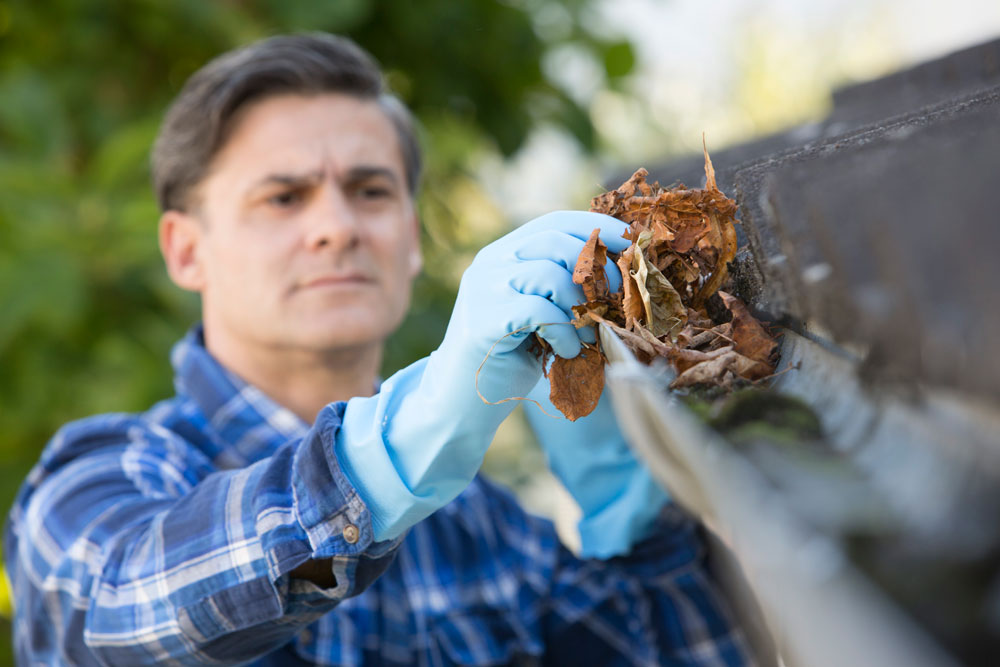
Spring weather is a welcome relief after surviving our recent winter. With this snow finally melting, you’ll soon be able to get outside and check your home for any signs of damage from the winter’s harsh winds and cold temps.
Let’s get outside for an early springtime inspection. All you need to get started are: approximately 1-hour, your checklist, and a sturdy ladder.
1. Take a Walk
First, walk around your property looking at your foundation, exterior walls, doors and windows.
Check your walls; if you have wood siding, is the paint starting to peel? Check for any signs of cracking, mould or deterioration in the wood. If you have brick or stucco walls, look for stains, cracks or crumbling. On brick or stone detailing, check the mortar for crumbling, which can cause loose stones or bricks to fall out and allow water to penetrate, damaging your home’s structure.
While exploring the exterior of your home, be sure to inspect the foundation. All foundations will have cracks in them and they can often be innocuous; however, pay attention to their location and size so that you can track whether they are growing or not. If you see any moisture coming through a crack or seeping through any area to reach your interior, contact your builder, Alberta New Home Warranty, or a foundation specialist (depending on the age of your home).
For windows and doors, you’re primarily checking to ensure they operate properly, and the seal is intact all the way around. Proper seals keep bad weather and water outside, where they belong!
2. Inspect Your Roof
Snow, heavy rain and high winds can all wreak havoc on your roof – especially the shingles. With regular inspections, you can catch any potential problems before they become a bigger problem and damage the inside of your home.
Ideally, you’ll want to use a ladder to check your shingles up close, but you can do a quick inspection from the ground with a pair of binoculars. Weather conditions, shingle quality and installation will affect their lifespan so this is a worthwhile step every year, even when your home is new. Check for missing shingles and any cupping, curling, cracking or rounded edges.
If you’re not sure about looking at your roof on your own, enlist a professional. Remember that safety comes first; if you do get up on a ladder, make sure the ladder is safe and you have someone spotting you!
 3. Check your Gutters and Downspouts
3. Check your Gutters and Downspouts
Before any spring rains arrive (and while you’re looking at the roof), see if leaves, dirt, or other debris have collected in the gutters and downspouts. Clogged gutters can lead to a build-up of water, ice, and possible roof damage, so it’s important to clean them out. Also, ensure that the gutters are safely attached to the home and free of leaks.
Downspouts should be positioned to direct water away from your home’s foundation; double-check to see if it has shifted during the winter. If you live in an older house (without weeping tiles), then you may want to consider adding extensions so your downspouts drain even further away from your foundation.
4. Look for Puddles and Ground Pooling
On a wet day, take a look around your yard to see if there are any puddles and pooling. If you’re doing your inspection on a dry day, look for any depressions in your yard.
Any depressions near the foundation can be filled in with soil and sloped to drain away from the house. You may want to fill in the other depressions with compact soil to eliminate any standing water, which can be breeding grounds for mosquitoes.
5. Check Your Window Wells
Dry leaves and other debris tend to accumulate in window wells throughout the year. This is an ideal time to clean them out and make sure the windows are in good condition with no water pooling against the foundation.
6. Garage, Sidewalks & Driveways
Ice heaves during the winter can cause your concrete to crack and move. Garage floors, driveways and private sidewalks should be checked for signs of cracking.
On a sunny day this spring, power wash these surfaces, fill any cracks and re-seal. We recommend re-sealing every two years to preserve the look and lifetime of these surfaces.
7. Warmer Weather Final Checks…Outside Taps, Yard & Deck
We’re all itching to use our barbecues and host friends on our decks by now.
Since a harsh winter has passed since you’ve seen the surface of your deck, check the stairs, railings and boards to ensure they’re secure and in good condition. Your deck material will dictate your maintenance schedule and whether or not you need to apply any treatment, like stain or paint. Otherwise, a good power wash may be all you need to extend your living area to the outdoors!
The above checklist should be a great step to getting you spring-ready, not to mention give you a good hour or so of time spent in the fresh air. Good luck!
Read the full series:
Part 1: Indoor Spring Cleaning To Improve Your Family’s Health




